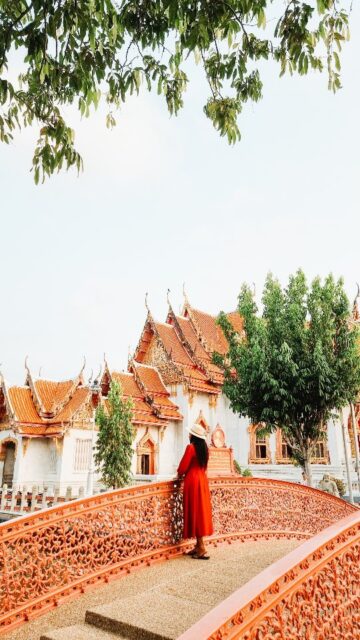One of my favorite things to do after a trip is to make short movies. These movies summarize an entire trip in less than 5 minutes (some take a minute only). I first started making them after a friend of mine, Donna, made one of our weekend in Paris. I liked the idea and decided to do the same for my first solo trip around some parts of Europe. (see below)
I also got motivated to keep at it because of my mum. She just wouldn’t sit to look through pictures on a screen. Videos like these were how I could show her how the trip went in the shortest amount of time, without leaving a lot out.
I have to say here though that I am not an expert and I have never claimed to be one. The videos I make are just for the fun of it. They’re quite simple and help to keep memories alive and this guide is aimed at JJCs like me who want to make short movies to document their travel adventures or anything else. Here are some tips to help you with that.
#Tip 1: Shoot in landscape, not portrait mode
When you take videos or images in portrait mode (phone or camera in upright position), you’ll have to deal with black spaces by the sides of your video. There are actually ways to manage portrait shots (like splitting the image, so that it covers the entire width of the footage or by using an app that puts the same image as a background).
But it’s just easier and straight forward when you already have your pictures or shots in landscape mode.

If you watched the first video (shot with a smart phone), you’ll notice a lot of these black spaces, as opposed to all the other movies I’ve made after it.
#Tip 2: Use what you have
There’s no need to invest in expensive high-end equipment or software, especially when you’re just starting out. You can shoot videos using your smart phone only, (like I did in the video above and below.)
As for putting it all together, I make use of Windows movie maker which ships completely free with Windows OS. Like I said before, I’m no expert. Maybe in the future, I may try to learn more about movie making and best tools to use but for now, I’m satisfied with WMM.
#Tip 3: Shoot long videos and keep them
You’ll have more to work with for your final edit when you take long (raw) videos. While taking these, don’t worry about interruptions or a shaky footage and don’t delete what you’ve got until you have that final movie you want.
In Windows movie maker (for example), you can split these videos and keep only the ones you’re satisfied with. I always find amazing shots (well, by my standards) in videos I almost let go of.
#Tip 4: Keep your hands steady
To avoid a lot of shakiness in your movies, try to keep your hands steady when shooting. It is possible to have desirable results shooting completely handheld (like the video below). You will notice some shakiness in the resulting movie but it’s not so bad that you can barely watch it.
One of the techniques I recently learnt, was this; pan with your body and not your hands. Lock your elbows to your sides and move your body with the camera or phone.
#Tip 5: Plan your video in advance
I put this one down here because I haven’t really done this yet but it is good practice to have an idea of what you want your video to look or sound like. Do you want something slow or upbeat? Do you want commentary on it or not. How should each footage fit into the next?
At the same time, don’t be too rigid with your plan. Leave room to be creative and spontaneous. If you see something interesting, take a video, even if you think it won’t fit into the plan.
#Tip 6: Practice, practice, practice
As with everything else, practice makes perfect. The more videos you make, the better you get. Take tutorials on YouTube, make movies of anything that sparks your interest. Just have fun with it.
#Tip 7: Don’t forget the essence of it all
I always make it a priority to enjoy the moment I’m in before & after whipping out my camera for a video or image. Not everything has to be caught on camera. There will be moments that don’t make the cut in your movie but will be forever implanted in your heart – and that’s really all that matters…
I hope these tips are enough to get you started :). Please leave a comment to let me know which ones you found most helpful or ask me any questions you might have. Would be delighted to answer them the amateur way!









